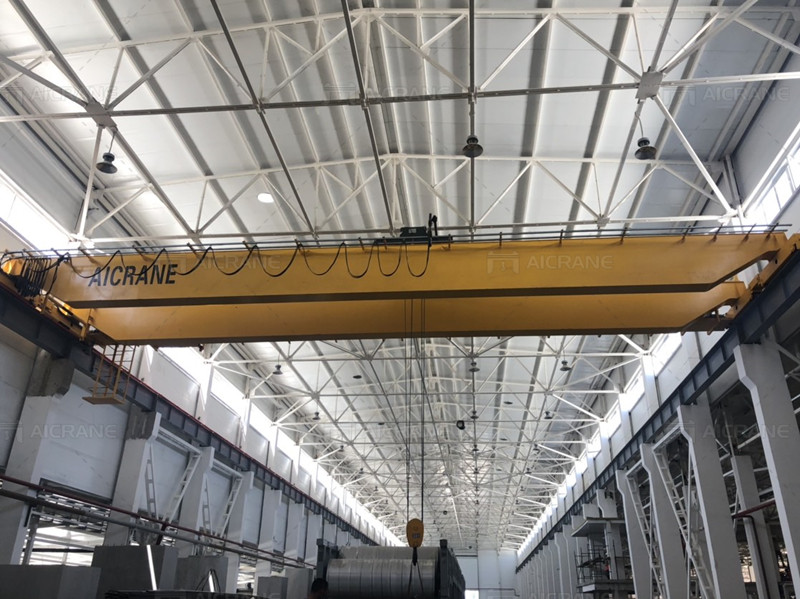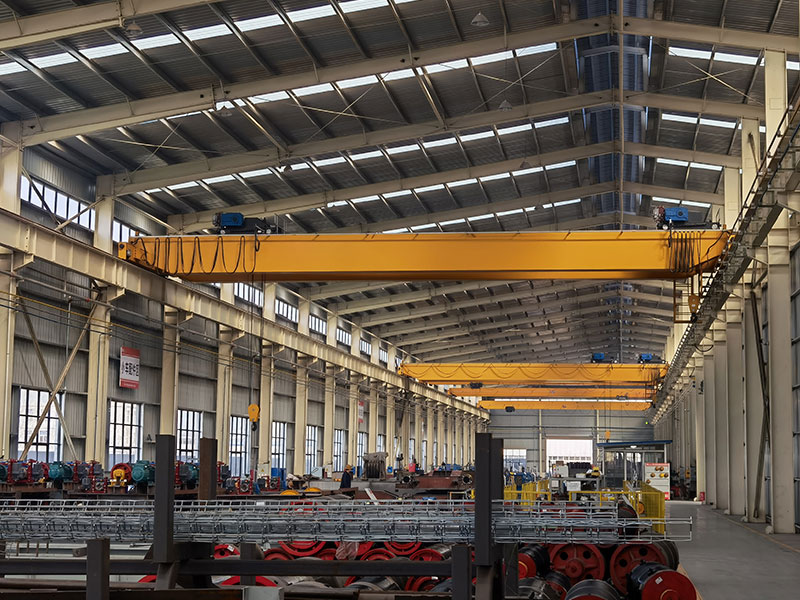Double girder overhead cranes are crucial in many industrial sectors, offering robust and reliable solutions for lifting and moving heavy loads. While standard models are available, many businesses require customized cranes tailored to their specific operational needs. Customization, however, can significantly impact the overall price of these cranes. This article explores the various factors involved in customizing cranes and how these modifications influence the double girder overhead crane price.

Understanding Double Girder Overhead Cranes
Double girder overhead cranes consist of two parallel girders that support the crane’s hoist, providing enhanced strength and stability compared to single girder overhead cranes. These cranes are widely used in heavy-duty applications such as manufacturing, warehousing, and construction. Customization allows businesses to optimize crane performance according to their unique requirements, leading to increased efficiency and safety.
Factors Influencing Customization Costs
Design and Engineering: Customization begins with the design and engineering phase. Specialized designs require additional engineering work to ensure that the crane meets specific load capacities, operational environments, and safety standards. This phase involves extensive calculations, simulations, and possibly even prototype development, all of which add to the overall cost.
Material Selection: The choice of materials significantly affects the price of a customized double girder overhead crane. High-strength steels, corrosion-resistant alloys, and other specialized materials may be required based on the operational environment and load requirements. These materials are often more expensive than standard options but are essential for ensuring the crane’s durability and performance.
Capacity and Dimensions: Customizing the crane to handle higher capacities or specific dimensions will impact its price. Increasing the load capacity requires stronger and often larger components, including girders, hoists, and motors. Similarly, modifying the span, height, or length of the crane to fit specific steel building structures or operational constraints will require additional materials and engineering work, thereby increasing costs.
Hoisting Mechanisms and Controls: Standard cranes come with basic hoisting mechanisms and control systems. Customizing these components to include advanced features such as variable speed controls, precision positioning, automated operation, and remote monitoring systems will significantly increase the price. These enhancements, however, can lead to greater efficiency, safety, and ease of use.
Environmental Adaptations: For cranes operating in harsh environments—such as extreme temperatures, high humidity, or corrosive atmospheres—special adaptations are necessary. These might include weatherproofing, specialized coatings, and reinforced components. Such adaptations ensure the crane’s longevity and reliability but come at a higher cost.
Compliance and Safety Features: Industries with stringent safety and regulatory requirements may need cranes equipped with additional safety features, such as overload protection, emergency stop systems, and advanced diagnostic tools. Ensuring compliance with industry-specific standards, such as those set by OSHA or ANSI, adds to the customization cost but is crucial for safe operation.

Examples of Customization and Associated Costs
Load Capacity Increase: A standard double girder overhead crane might be rated for a 20-ton load. Customizing it to handle 50 tons would require reinforced girders, a more powerful hoist, and a stronger supporting structure. This could potentially double the base cost of the crane.
Precision Control Systems: Adding advanced control systems, such as PLC-based automation, variable frequency drives (VFDs), and remote operation capabilities, can significantly enhance the crane’s functionality. These systems can add 20-30% to the overall cost but offer long-term benefits in terms of efficiency and precision.
Environmental Protection: For a crane operating in a coastal area with high humidity and salt exposure, special corrosion-resistant materials and protective coatings are necessary. These adaptations can increase the price by 10-15% but are essential for preventing rust and ensuring longevity.
Specialized Hoisting Mechanisms: Standard hoists might not suffice for specific tasks requiring high precision or rapid operation. Custom hoists with enhanced features, such as multiple lifting speeds or synchronized lifting mechanisms, can add 15-25% to the cost but significantly improve performance.
Balancing Cost and Value
Initial Investment vs. Long-term Benefits: While customization increases the initial investment, it often leads to long-term benefits such as improved efficiency, reduced maintenance costs, and enhanced safety. Companies should consider the total cost of ownership (TCO) rather than just the upfront cost. A customized crane tailored to specific needs can result in higher productivity and lower operational costs over time.
Supplier Expertise: Choosing a reputable supplier with extensive experience in customizing cranes can impact the overall cost. Experienced suppliers can optimize the design and engineering process, potentially reducing costs while ensuring high-quality customization. They can also provide valuable insights into balancing customization needs with budget constraints.
Incremental Customization: For businesses with limited budgets, incremental customization might be a viable approach. Starting with a standard crane and gradually adding custom features as operational needs and budgets allow can spread out the cost over time. This approach enables businesses to benefit from customization without a significant initial financial burden.
Summary
Customization of double girder overhead cranes is essential for many industries, enabling them to meet specific operational requirements and enhance overall efficiency. However, this customization comes with a cost. Factors such as design and engineering, material selection, capacity and dimensions, hoisting mechanisms, environmental adaptations, and compliance with safety standards all contribute to the final price of a customized crane.
While the initial investment for a customized double girder overhead crane may be higher, the long-term benefits often justify the cost. Enhanced performance, improved safety, and increased operational efficiency can lead to significant savings and productivity gains over the crane’s lifespan. By carefully considering their specific needs and working with experienced suppliers, companies can effectively balance the cost and value of customizing their double girder overhead cranes.